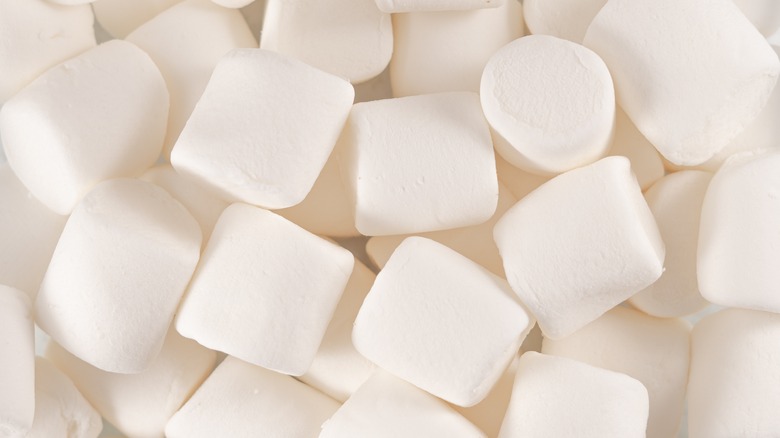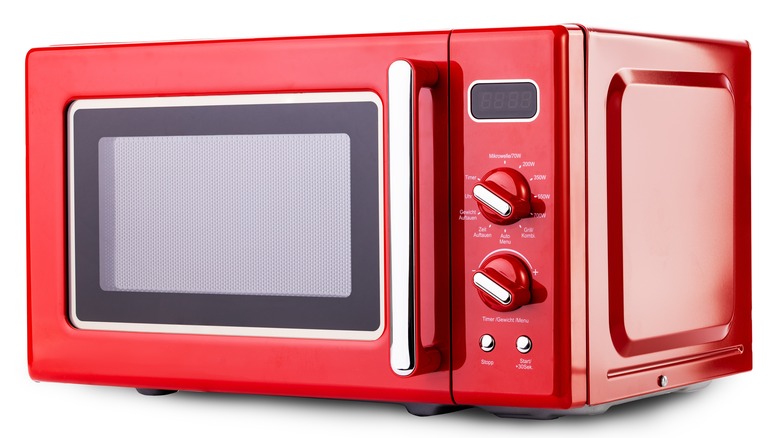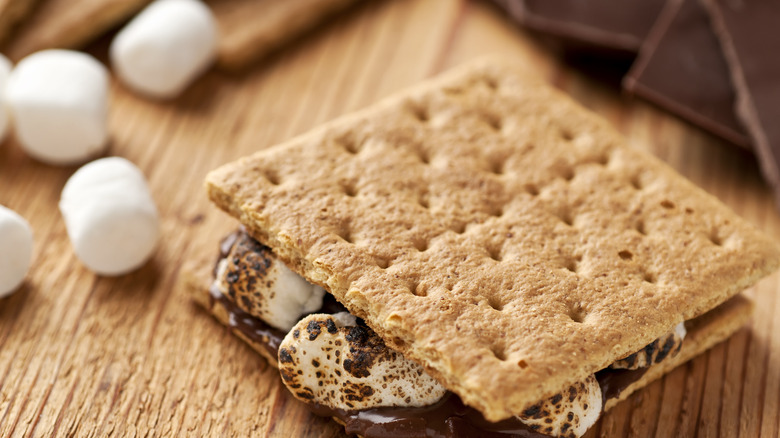The Tips You Need To Know For Microwaving Marshmallows
You don't need a roaring fire to enjoy marshmallows. Just an ordinary kitchen microwave will do. Melted marshmallow fluff can be used in various desserts and dishes but also as a festive dip for those Graham crackers and gingerbread cookies. While it may seem simple enough — just toss the marshmallows into the microwave and hit start — melting marshmallows can be an extra sticky affair.
You will want to make sure that you approach it right to avoid a microwave full of sugary syrup and an afternoon scrubbing. There doesn't seem to be an exact number of marshmallows that you can microwave at one time. It really depends on the size of your microwave and your needs. However, we suggest you practice caution and go with a smaller number of marshmallows at first. This allows you to get a feel for how quickly they can melt. From there, you can increase the amount as needed. The most important thing to keep in mind is using a microwave-safe bowl. The last thing you want is a piping hot bowl that requires oven mittens or for your container to have melted due to non-microwavable plastic. Also, add a little bit of water to the mix to make things less thick when the marshmallows melt.
How long do you microwave marshmallows
It's best to microwave marshmallows in short bursts. You don't want to let your marshmallows cook for more than 20 to 30 seconds at a time. It's best to check them about every 10 seconds to see how much they've melted. Marshmallows are a bit like butter in that regard. Likewise, you should stir the mixture so that the marshmallows melt evenly. You should also leave the bowl of marshmallows uncovered as it allows the heat from the microwave to directly heat the sweets.
Unlike when you cook marshmallows on the fire, you shouldn't expect marshmallows to burn. Instead, they should turn into a thick white liquid, which as mentioned above you can break up with water. Melting marshmallows should be a fairly quick process because marshmallows have an incredibly low melting point. They begin to melt at 98.6 degrees Fahrenheit. That being said, you should be careful when finished as it's likely that your marshmallows will be hot. As anyone who's ever made a s'more knows, marshmallows get pretty sticky when melted or cooked. The last thing you want is to accidentally burn yourself with the sticky mixture. Likewise, if you leave melted marshmallows out too long then they'll begin to harden. So it's something you want to use sooner rather than later.
Avoid marshmallows exploding in the microwave
Failing to check your marshmallows in the microwave can have a rather messy side effect of microwaving marshmallows: They can explode, leaving the inside of your microwave looking like a sticky crime scene. Why does that explosion happen
It's all due to the air and gelatin inside of a marshmallow. A marshmallow is more than half air trapped by the elasticity of gelatin. That gelatin allows a marshmallow to expand, but it has its limits. When you apply the heat from the microwave, that causes the air inside of the marshmallow to expand. When it reaches a certain pressure point too quickly, the air will cause the gelatin to explode as it escapes causing quite a mess.
The reason this doesn't happen when roasting marshmallows is the Mallard reaction caramelizing sugar. So the best way to avoid having a mess is to microwave your marshmallow in small doses and keep mixing the mixture. This will get rid of any additional air inside and leave a gooey treat instead.


